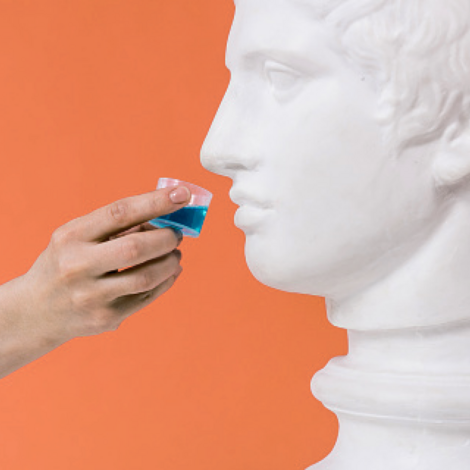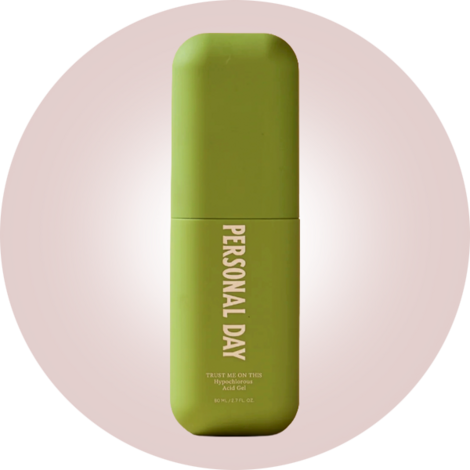On a sweet piece of East Hampton real estate next to SoulCycle and Carissa’s the Bakery—and just behind Sant Ambroeus, Staud, and Isabel Marant, is a med spa called The Beauty Edge. It offers everything an East Hampton resident would want if having an edge on beauty were the objective.
There’s the usual brow grooming, waxing, and facials, along with the cosmetic treatments that have become increasingly commonplace in med spas: Botox, Xeomin, and Daxxify to relax furrows; fillers to plump up lips and soften wrinkles; liquid rhinoplasty, something called a “vampire breast lift,” and IV drips to relieve hangovers or the blahs.
With The Beauty Edge, Paula De Larrea, who wields the syringes, lasers, and microneedles, entered a thriving sector of the service industry. Med spas are booming across the country—with a 20 percent increase from 2020 to 2023, becoming a $17 billion business with some 10,000 in operation around the country. As the industry grows, so does the number of complaints about quality and safety. These spas have become vivid examples of what can happen when enterprise and medical treatments collide.
Shortly after it opened last August, De Larrea’s business was enthusiastically welcomed to East Hampton. The Village posted on Facebook: “There’s a new business woman in town! Paula De Larrea!” The post described The Beauty Edge’s injectables and De Larrea’s “decade of experience and advanced education from the USA, Europe, and South America.” Three photos show De Larrea posing in her new salon with Mayor Jerry Larsen and other East Hampton officials. It appears to be entirely above board, right down to De Larrea’s tan scrubs and white lab coat.
But medical credentials aren’t as easy to acquire as a lab coat. Two separate sources told me that De Larrea doesn’t have a license to administer injections.
The Beauty Edge website notes that De Larrea holds “PA-C and MLE licenses.” PA-C stands for “physician assistant, certified” and MLE means “licensed medical esthetician,” both of which sound legitimate. But the New York State Department of Esthetics stipulates that the term “medical esthetician” isn’t universally recognized by state licensing boards and can be misleading. Even more concerning, according to the New York State Education Department: De Larrea does not appear to hold a physician’s assistant license, which the state requires to administer facial injectables. Her name yields no results in the state’s search engine.
It isn’t just her website that publicly lists questionable credentials. On Nextdoor, De Larrea advertises herself as a “local PA-C, Aesthetician, and Phlebotomist specializing in aesthetic medicine, advanced facials, body contouring, PRP, and laser hair removal.”
When I first contacted De Larrea, she told me she has “multiple licenses” and was finishing a nursing degree at Suffolk County Community College. “My plan is to become a nurse practitioner.” I informed her that The Beauty Edge website indicates she is already a PA-C. Both certifications require a master’s degree, with the physician’s assistant program demanding significantly more clinical hours than a nurse practitioner. When I pressed her again on what degree and certification she held, De Larrea instead turned the conversation to her website, saying that someone else had created it and that she was unaware of the information listed. “I hold all the proper licenses and certifications required for the services I provide,” she added, “and everything is in good standing.”
Jonah Shacknai, the founder and former CEO of Medicis Pharmaceutical, a company that made Restylane, an injectable filler, and Dysport, a neurotoxin, has seen a number of unlicensed practitioners offering these medical treatments. “The surprising thing is that clients don’t do the minimum diligence about who’s injecting them,” he says. Many people rely on word-of-mouth recommendations rather than carefully checking an injector’s qualifications. “I’ve seen it myself in L.A. with quote-unquote nurse injectors who are not licensed,” says Shacknai. Sometimes, these injectors offer the enticement of a discount.
“These substances can go very wrong in the hands of someone who isn’t licensed,” Shacknai adds. “It’s an even bigger risk with fillers than with neurotoxins because they can inject an artery, blood vessel, or nerve causing very serious adverse reactions.”
The number of cases against unlicensed injectors is multiplying. Last April, a patient in Houston said she was infected after a practitioner, who lacked adequate credentials, injected her with Botox and allegedly struck a nerve. An owner of a med spa in the Boston area, who represented herself as a nurse, was arrested last year for allegedly performing thousands of injections without a license. It isn’t terribly difficult for an unlicensed injector to get their hands on these drugs. “There are some authorized accounts that supply practitioners that aren’t licensed and not trained, largely in violation of the rules that the neurotoxin suppliers have in place,” says Shacknai. “There’s definitely a gray market that exists for neurotoxins and fillers.”
Dr. Dana Stern, a board-certified dermatologist with offices in Sag Harbor and Manhattan, also warns of the rise in counterfeit injectables. Earlier this year, for example, a med spa operator in Manhattan was arrested after injecting patients with counterfeit Botox from China. Some recipients were disfigured and a few patients suffered life-threatening complications. Three months ago, state regulators closed a med spa in Ohio after they discovered its operators were using unapproved and possibly counterfeit injectables.
At The Beauty Edge, an aesthetician who briefly rented a room from De Larrea for facials, lash lifts, and brow grooming alerted the East Hampton Village Police, the New York State Attorney General’s office, and the State Education Department’s Office of Professional Discipline about her suspicions of medical violations. She shared with me photographs she took of the staff refrigerator, where boxes of injectables sat alongside an overripe banana and a jar of mayonnaise. One shelf held a box of Rescoderm, an exosome that isn’t FDA-approved as an injectable.
“The boxes in question were microneedling products intended strictly for topical facial use, not for injection,” De Larrea explains. But, other than the Rescoderm, those boxes contained substances that are used solely as injectables, not as topical treatments. “These toxins [Daxxify and Xeonim] would have to be deposited with a syringe,” says Shacknai. “It’s impossible for the toxins to penetrate without a syringe because of their molecular size. And no one can do this without the proper licensing.”As for the unapproved Rescoderm, De Larrea says, “Rescoderm was never injected; it was intended only as a high-quality topical serum.”
As long as people yearn to alter their looks and beat back time by softening their wrinkles, there will be businesses like The Beauty Edge. And while FDA-approved injectable substances are safe, they still carry risks— especially when administered by unlicensed practitioners. What’s more, most clients wouldn’t know whether a syringe is filled with an approved drug or a counterfeit or diluted substance. “All services performed within [our] space have always used authentic, undiluted products sourced from authorized distributors,” De Larrea assures me. “There is absolutely no history or practice of using counterfeit substances.”
The bottom line is that trusting a med spa for invasive procedures like injections, lasers, or micro-needling can be risky. A good address in a wealthy neighborhood is no guarantee of excellence or safety.
Amanda M. Fairbanks is a journalist and the author of The Lost Boys of Montauk: The True Story of the Wind Blown, Four Men Who Vanished at Sea, and the Survivors They Left Behind. She is currently at work on her second nonfiction book, Tick Boom, a biography of Lyme disease.




